Previously on these pages, Puffins have learned that everything was better in the old days. Malta was better as a Crown colony, railway stations were better with splt-flap Solari rattle boards rather than giant RGB display screens. Likewise, shuttles, ramps, roll-ons and roll-offs are for wimps. What’s wrong with a crane, chain and two planks of wood?
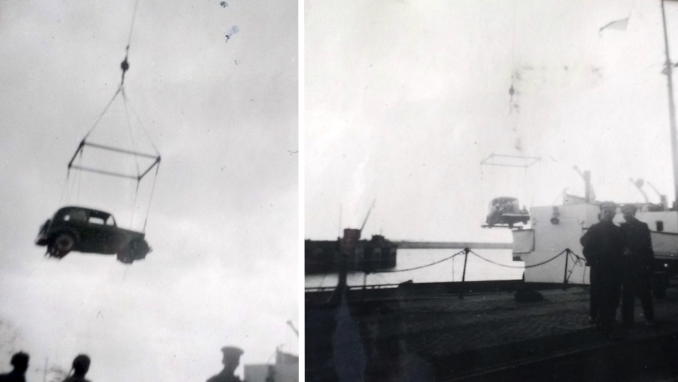
© Always Worth Saying 2022, Going Postal
A Ford 8 is properly taken aboard for a trip to the continent by swinging it into the hold. Off-camera, presumably using the gangplank instead, were my father and my grandparents. The year is 1952 and, according to a handwritten white ink Nostalgia Ablum caption, the vessel is the SS Dinard.
The Dinard was a famous former Southern Railways steam turbine cross-channel ferry, built on the River Clyde in 1924 by Denny of Dumbarton. After the war (during which she served at both Dunkirk and Normandy) and after the nationalisation of the railways in 1948, the Dinard was rebuilt as a car ferry with capacity for 363 passengers and 70 cars.
The year after the above photograph was taken, further modifications allowed vehicles to be loaded via a ramp at the rear of the vessel inaugurating a drive-on service between Dover and Boulounge. Dinnard worked that route until 1958, after which she was sold to the Viking Line.
The year previous to its immortalisation in our family’s Nostalgia Album, the Dinnard played its part in the Monte Carlo rally.
The February 3rd 1951 edition of The Sphere reported 64 cars had left Glasow and reached Folkestone, via stages through the mountains of Wales, with sixty-three assembling at the channel port where the Dinard awaited. The missing contestant was a Mr K B Miller whose Jowett Jupiter blew a gasket in Carlisle.
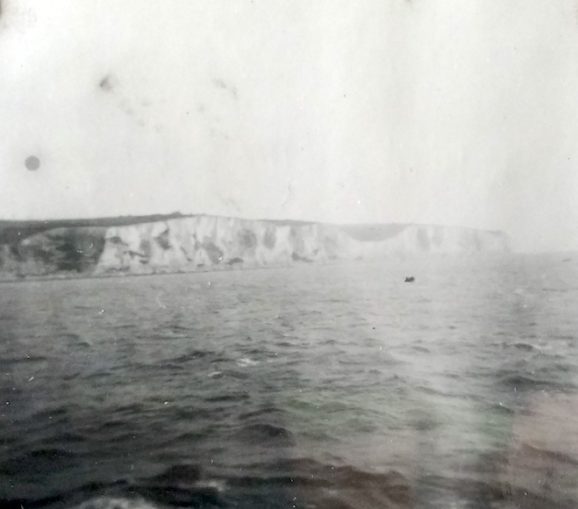
© Always Worth Saying 2022, Going Postal
Mrs J Henry’s AC went into the hold, as did a Pontiac driven by F and J Hulskeres of Holland. They were joined by Mr R R Ellison whose Jowett Jupiter was faring better than K B Miller’s. The Austin of two un-named Finns was safely embarked only later the next day to be pictured by The Sphere upside down and the wrong way round in a ditch near Gonesse. The crossing had been smooth and was followed by a long rally haul to Liege after the arrival in Boulogne.
Perhaps inspired by the Monte Carlo rally, my father and grandparents started from their native Carlisle, perhaps passing a still distraught Mr Miller, but upon reaching the near continent forsook Monte Carlo and Liege (in those days a steel and coal town) and instead struck southwest with their first port of call being Louviers and Monsieur A. Sonnet’s Hotel De La Poste.

© Always Worth Saying 2022, Going Postal
Louviers sits on the banks of the River Seine near Rouen. In today’s money the route taken would be Boulogne to Abbeville on the A16 then Rouen to Louviers on the A13. As we shall see, they are aiming for the A28.
Not the way I would have gone. Surely, drive to Plymouth and sleep overnight to somewhere like Brest or Roscoff then aim for Nantes and avoid the A28 and A11? Might there even have been an all-stops Mail Royalé Côastal steamer to rendezvous with a crane at St Nazaire? No matter.
The comune of Louviers sits 60 miles west of Paris. In 1952 it had a population of about 10,000. Just after the war, parts of the medieval township were rebuilt in the Stalingrad style under the direction of Mayor Pierre Mendès-France. Puffins may recall M. France as a star of the seminal 1969 Marcel Ophuls documentary Le Chagrin et la Pitié (The Sorrow And The Pity) during which the mayor and others detailed the sterling non-efforts of the war-time French so-called ‘resistance’.

© Always Worth Saying 2022, Going Postal
We can see the ‘Cathedral of Notre Dame, Louviers’ from the same spot on Street View. The blocky building to the right is a pharmacy outside of which the Google car caught them flying the Union Jack.
The street is Rue du Maréchal Foch, a typical provincial small town Gallic thoroughfare of independent shops, street cafes and brassieres. In the modern-day, to the right of the photographer sits a Le Parvais Cafe Brasserie. Given the ‘Cathedral’ clock reads 9:15 we shall assume my family breakfasted there before continuing their car journey.
Although captioned a cathedral, Notre Dame de Louviers is an early sixteenth-century parish church under the Archbishop of nearby Rouen.
Elsewhere in the township, local company records show that a De La Poste Hotel and restaurant business operated in the 1950s at 11 Rues de Quarte Moulins (Four Mills Street).
Further reference to our friends at Google Street View shows the address to be a decent match with the nearest window in the old photograph replaced by a door and with the hotel sign replaced by a sloped canopy. Note the window sill and its distinctive grill which are still in place. The four upstairs windows look similar and, in a less bleachy original, might show the more ornate surround on the furthermost frame.
After an overnight stay and breakfasting, my father and his parents continued to Tours, a 190-mile drive further south and west.
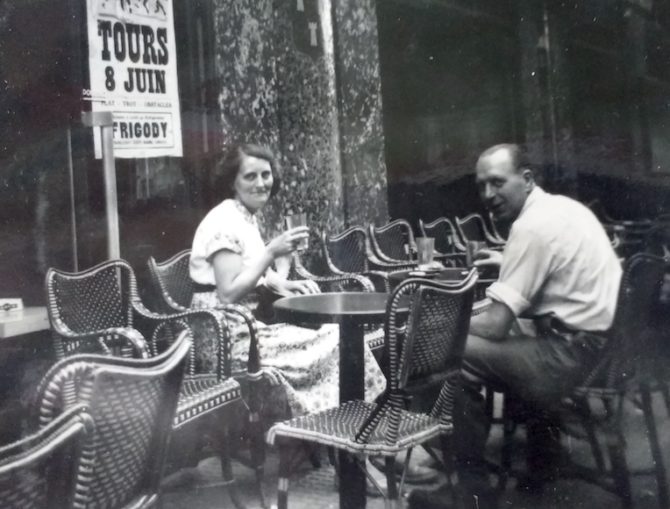
© Always Worth Saying 2022, Going Postal
The above photo is captioned, ‘Refreshment Tours’ and at first glance reveals few locational clues given the number of street cafes there will be in the Centre-Val de Loire city. As you can see, the poster behind my grandmother advertises an event on the 8th June. The small print below seems to include ‘Flat’ and ‘Trot’ as if an equine meeting. That impression is confirmed by the graphic above which seems to portray galloping horses. As for Frigody, I can’t place it as a French word or place name or a person’s name. Perhaps the first letter of the word is missing?
On closer inspection, the outside of the cafe might to be of battered concrete. There is a two castles emblem within a shield high on a wall. Not a great clue as the city crest of Tours includes such stylised castles and the imagery is ubiquitous.
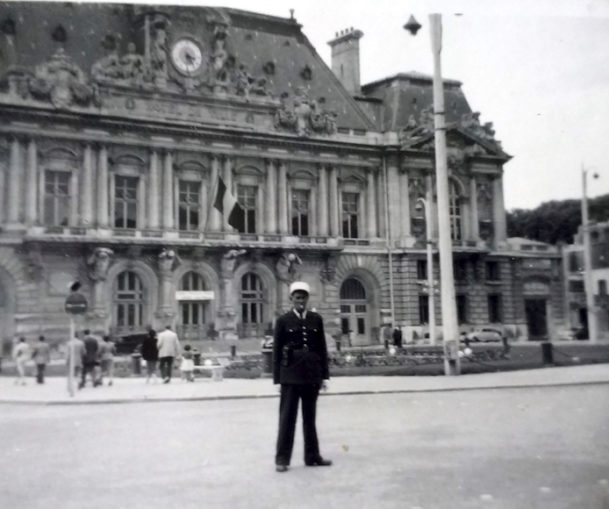
© Always Worth Saying 2022, Going Postal
Easier to locate is Gendarme Clouseau, on point duty despite there being no traffic, outside a very recognisable Tour Hotel de Ville (town hall). Built in 1904, architect Victor Lalouzx was also responsible for the railway station at Tours and the Compagnie Paris-Orléans Gare d’Orsay terminus in Paris.
Still extant, it can be viewed here. If you pirouette you can, no matter how much you may detest the French, concede they’re better at town centres than the deadwood that has inhabited British civic life for the last generation or three.
The thands on the Hotel de Ville clock face announce 3:25, suggesting a six-hour drive from Tours.

France, via Free World Maps,
Courtesy of Free World Maps – Free World Maps
If we assume a 40 mph progress to the extreme South West of France (rather than the 30 mph to Tours) we can just about imagine a mid-night arrival for the Ford 8 at the Florida Hotel in glamorous Biarritz. A mighty fifteen bone shaking hours from la Hotel De La Poste, in among Oxen, carts and bicycles covered in onions, but I’ll wager our Nostalgia Album photographers enjoyed every second of it and didn’t complain one jot.
The Floida still there and is easy to find, albeit now with a brightly rendered exterior and extra embellishment about the balconies. In the intervening seven decades, the attendant street cafe and its awning has suffered. The car to the left is my grandfather’s now heroic Ford 8, recognisable by embellishments including a prominent AA badge on the radiator grill. Glancing to the right on Street View reveals the Sainte-Eugénie Church of Biarritz, a useful landmark, beyond which lie Atlantic Ocean beaches.
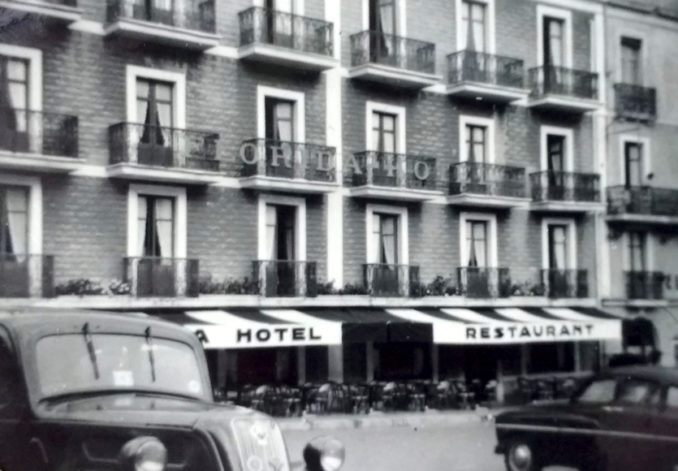
© Always Worth Saying 2022, Going Postal
In the present day, the Florida is a £75 a night four-star hotel which looks and sounds somewhat worn according to recent visitor’s photos and reviews. The hotel enjoys a rating of two and a half out of five, as a result of 452 TripAdvisor reviews, and therefore languishes at 56th out of the 60 Biarritz hotels listed. Although this old photograph reviewer’s French isn’t magnifique, the consensus describes an old hotel with cheap renovations, small rooms and a sea view only if you are a hibou, a chouette or are prepared to crick your neck.
The neighbouring Eglise of St Eugine has fared better. Inaugurated in 1856 and built in the Romanesque-Byzantine style, the Eugenie Chapel is named after the patron saint of Napoleon III’s wife, Empress Eugénie de Montijo.
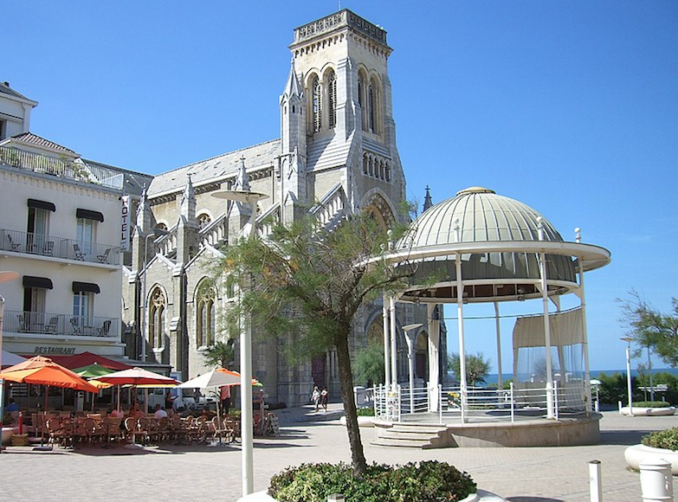
Sainte-Eugénie Church,
Offroads – Licence CC BY-SA 3.0
Previously a small fishing village, the watering-place of stars and royalty became fashionable during the time of Napolean III. As well as a chapel, a palace was built in which the French royal family summered. Hotels and casinos followed. The railway arrived 1864.
Puffins who, in previous lives more interesting, would leave Paris Austerlitz on Friday teatime (aside a pretty companion) to connect with the sleeper train to Madrid at Irun, will have thundered through Biarritz on L’Aquitaine not realising a dusty album discarded beneath an attic model railway might one day reveal their father and grandparents not only got there first but did it rather better.
To be continued…
© Always Worth Saying 2022



